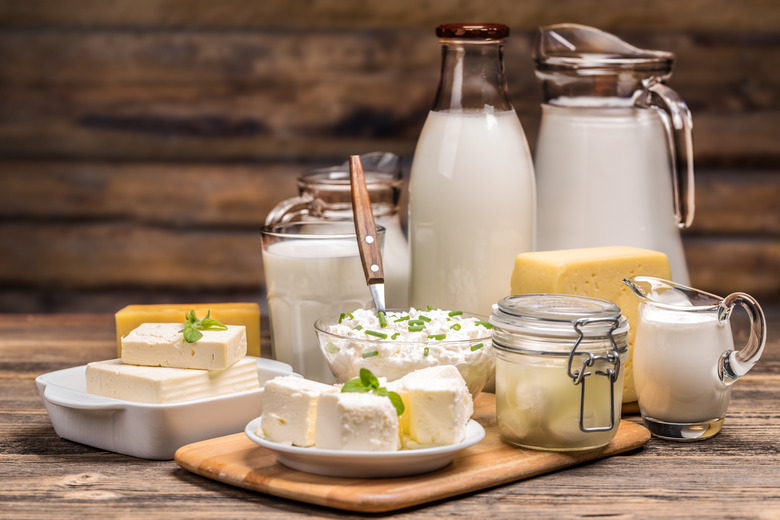Sources Of The Lactase Enzyme
The lactase enzyme digests the sugar molecule lactose into simpler molecules called glucose and galactose. Lactose is commonly found in dairy products, so those who do not have the enzyme lactase suffer from lactose intolerance. The lactase enzyme is naturally produced by the cells that line the small intestine. It is also produced by the bacteria that live in the small intestine. Humans who do not have lactase can get it by taking supplements. They can get the lactase enzyme in the form of a pill, or by eating probiotic bacteria that will then live in their intestine and produce lactase.
Small Intestine
Small Intestine
Human milk contains high amounts of the sure lactose, which is digested by lactase into glucose and galactose. However, 75 percent of adults in the world are lactose intolerant, meaning they experience varying degrees of diarrhea, nausea, abdominal pain and flatulence after ingesting lactose. Lactase is produced by the cells that line the small intestine. It is attached to the membrane of these cells and is exposed to the food that is being digested in the intestine. Babies that are born on time, not too early, make lots of lactase and can readily digest milk. However, as they become adults, their small intestine can stop producing lactase altogether resulting in lactose intolerance.
Intestinal Bacteria Make It, Too
Intestinal Bacteria Make It, Too
In addition to intestinal cells, certain bacteria that live in the intestine also make the lactase enzyme. Lactose that is not digested by human lactase is digested by bacterial lactase. When bacteria are ingested as part of food (yogurt), the lactase enzyme survives the acid stomach because it is protected by the bacterial cell wall. Once in the small intestine, the bacteria release the lactase enzyme to digest lactose. An intact bacterial cell wall, which surrounds the entire bacterium, and the rate of lactase release are the two factors that determine how well a treatment of lactose intolerance by yogurt ingestion will be.
Lactase In A Pill
Lactase In A Pill
People who are lactose intolerant can obtain lactase by taking it in the form of a pill or chewable tablet. WebMD recommends that tablets containing 6,000-9,000 IU (international units) should be ingested at the start of a meal. It also recommends adding 2,000 IU of liquid lactase to a 500 milliliter cup of milk right before drinking it. One drawback of lactase pills is that not all lactase preparations — pills, liquids and brands — have the same concentration of the enzyme.
Probiotic Bacteria
Probiotic Bacteria
In addition to taking lactase pills, people can obtain lactase by eating bacteria that make lactase. The Food and Drug Administration defines probiotic bacteria as "live microorganisms which, when administered in adequate amounts, confer a health benefit on the host." These bacteria are not pathogens, so that do not make people sick. The three common genera (the plural of genus) of probiotic bacteria are Lactobacillus, Bifidobacterium, and Enterococcus. Representative species of each genus are Lactobacillus acidophilus, Bifidobacterium longum and Enterococcus faecalis.
Cite This Article
MLA
Ph.D., David H. Nguyen,. "Sources Of The Lactase Enzyme" sciencing.com, https://www.sciencing.com/sources-lactase-enzyme-15028/. 25 April 2018.
APA
Ph.D., David H. Nguyen,. (2018, April 25). Sources Of The Lactase Enzyme. sciencing.com. Retrieved from https://www.sciencing.com/sources-lactase-enzyme-15028/
Chicago
Ph.D., David H. Nguyen,. Sources Of The Lactase Enzyme last modified March 24, 2022. https://www.sciencing.com/sources-lactase-enzyme-15028/
